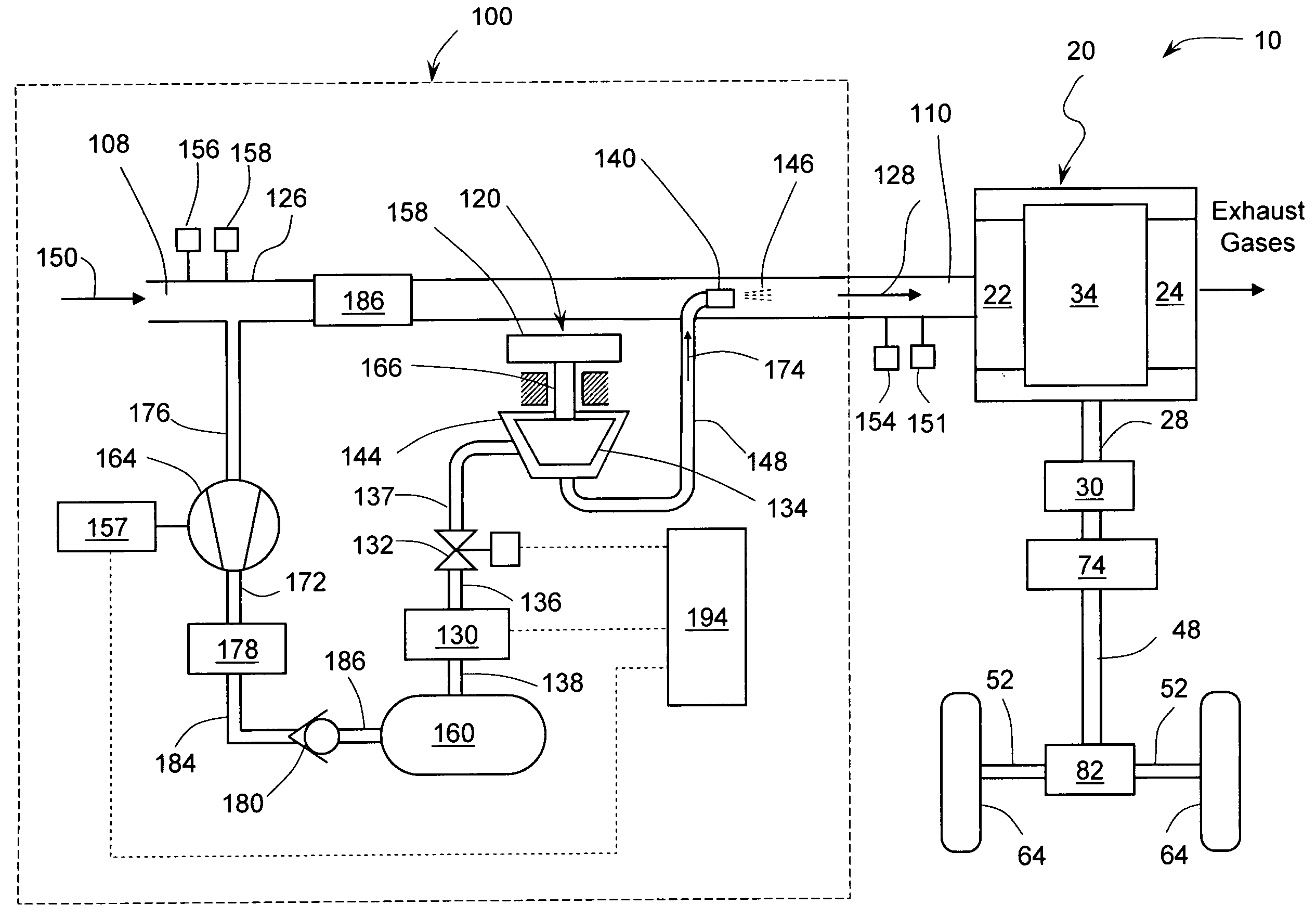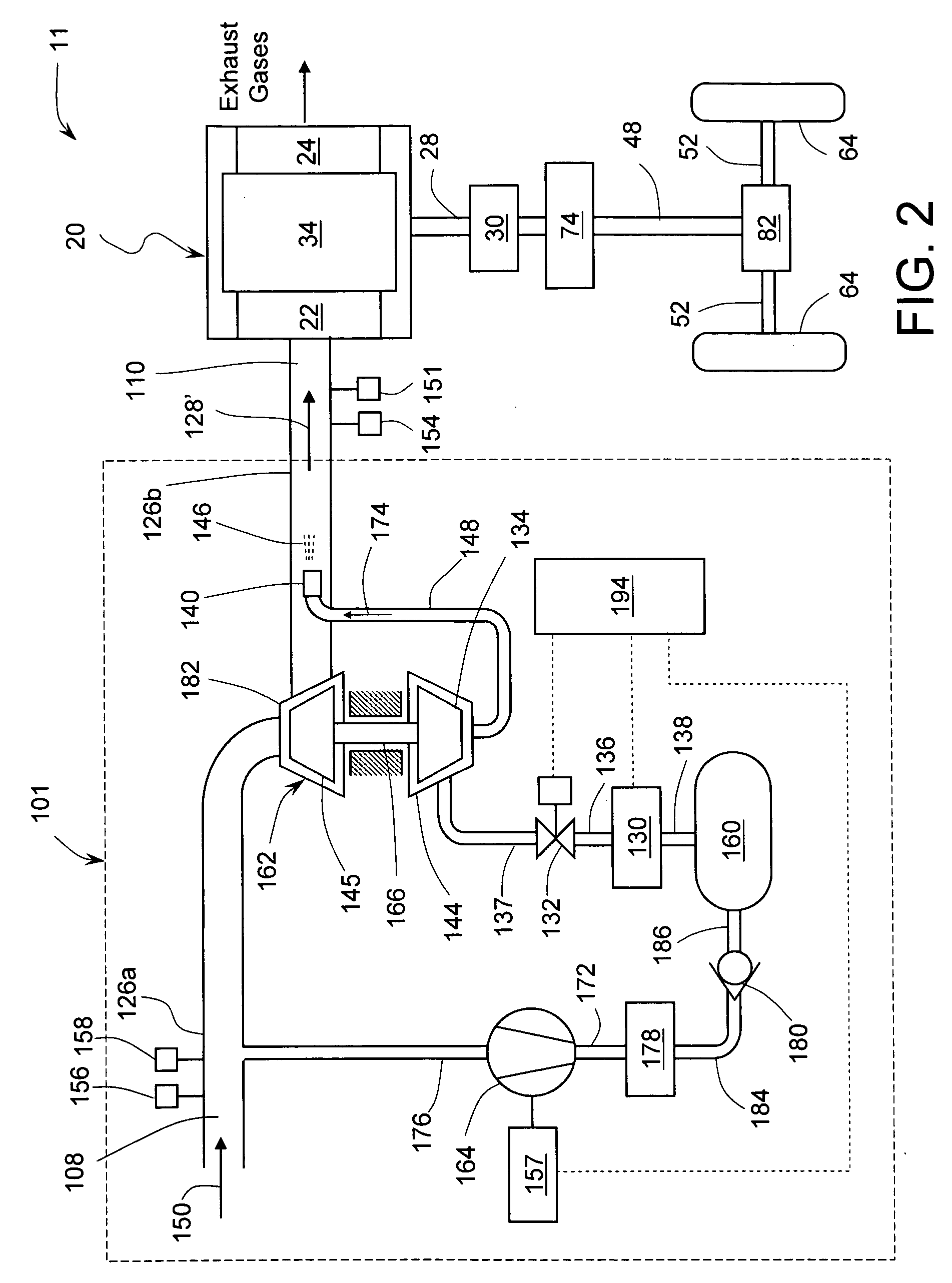Supercharged internal combustion engine system
a technology of internal combustion engine and supercharger, which is applied in the direction of electrical control, process and machine control, instruments, etc., can solve the problems of reducing the power and torque of downsized engines with reduced swept volume, limiting the density of turbocharged ice, and limiting the response time of turbocharged ice, so as to increase the density, increase the weight of ice charge, and increase the effect of ice output power
- Summary
- Abstract
- Description
- Claims
- Application Information
AI Technical Summary
Benefits of technology
Problems solved by technology
Method used
Image
Examples
Embodiment Construction
[0027]Selected embodiments of the present invention will now be explained with reference to drawings. In the drawings, identical components are provided with identical reference symbols. It will be apparent to those skilled in the art from this disclosure that the following descriptions of the embodiments of the present invention are merely exemplary in nature and are in no way intended to limit the invention, its application, or uses.
[0028]Referring to FIG. 1, there is shown a supercharged internal combustion engine (ICE) system 10 in accordance with a first embodiment of the subject invention. The ICE system 10 comprises an ICE 20 and a supercharger assembly 100. The ICE 20 has at least one combustion chamber 34 fluidly coupled to an intake passage 22 and to an exhaust passage 24. The type of ICE 20 can be either a compression ignition (diesel), a fuel injected spark ignition, carbureted spark ignition, or homogeneous charge compression ignition (HCCI) also known as controlled aut...
PUM
 Login to View More
Login to View More Abstract
Description
Claims
Application Information
 Login to View More
Login to View More - R&D
- Intellectual Property
- Life Sciences
- Materials
- Tech Scout
- Unparalleled Data Quality
- Higher Quality Content
- 60% Fewer Hallucinations
Browse by: Latest US Patents, China's latest patents, Technical Efficacy Thesaurus, Application Domain, Technology Topic, Popular Technical Reports.
© 2025 PatSnap. All rights reserved.Legal|Privacy policy|Modern Slavery Act Transparency Statement|Sitemap|About US| Contact US: help@patsnap.com



